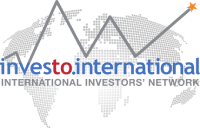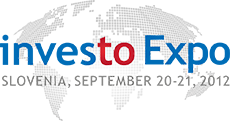SLOVENIA has a strategic location and quality infrastructure Slovenia lies right in the middle of one of the world's most exciting business regions. It sits on the intersection of several of Europe's historical crossroads. Transport by rail and road prevails over air traffic due to Slovenia's short distances. And unlike many Central and Eastern European countries, Slovenia also has direct access to the sea through the Port of Koper. Ships coming into the Mediterranean through the Suez Canal can save 5-10 days and up to 3,700 km by using the southern sea-route access to Central Europe.
Selected industries in SLOVENIA
Following industries have been selected to be presented more into details:
Other facts about SLOVENIA
SLOVENIA is a member of the euro area
On 1 January 2007 Slovenia adopted the euro as the national currency. The country entered the euro area with an exchange rate of 239.64 tolars to the euro, becoming the 13th member of the euro area, and the first of the ten 2004 EU newcomers, to adopt the common European currency.
SLOVENIA has a stable political and economic environment
Since gaining independence until the present day, Slovenia has made important progress in economic development and has achieved a higher standard of living. Economic growth was pursued in a stable macroeconomic environment, whilst the main factors of economic growth were high exports and investment activities, the latter particularly in the nineties. Thus, Slovenia managed to reduce the gap behind the EU average.
Key macroeconomic indicators (2006)
- GDP at current prices: EUR 30.45 bn
- GDP per capita: EUR 15,167
- GDP per capita at PPS: 20,500 (84% EU-25)
- GDP growth rate: 5.7%
- Exports: 67.5 % GDP
- Exports of goods and services: EUR 20.5 bn
- Exports of goods and services (growth): 12.3%
- Imports of goods and services: EUR 20.8 bn
- Imports of goods and services (growth): 12.2%
- Inflation: 2.5%
- Unemployment (ILO): 6.0%
SLOVENIA is a country with great opportunities for potential business partners
The legislation in line with EU standards, the simplicity of starting a business, low taxes, the unrestricted transfer of profit and capital repatriation, the Government's pro-investment stance etc. have created a pro-business climate.
SLOVENIA is a prime investment location
In a challenging business landscape, Slovenia is a prime investment location. Foreign investors choose Slovenia for a great variety of reasons. The most important are high business ethics and commitment to quality work, good ties with markets in Western and Southeastern Europe, a central position in Europe and excellent infrastructure, and last, but not least, quality of life. Austria remains the largest investor, followed by Germany, Switzerland, France, the United Kingdom and the Netherlands. The Slovenian Government seeks to attract investment from other countries in order to bring greater diversity into Slovenian economy.
SLOVENIA is a bridge to the countries of Southeastern Europe
For historical reasons, Slovenia can be considered as a bridge to the countries of Southeastern Europe, especially Balkan countries, and therefore help open up new possibilities for cooperation.
Modern SLOVENIA and implementation of the Lisbon Strategy
In 2005, the Slovenian Government set out a Framework of Economic and Social Reforms to Increase Welfare in Slovenia, closely followed by two other fundamental documents - Slovenia's Development Strategy and the Resolution on National Development Projects for the Period 2007-2023. With a host of clearly defined measures which are consistent with the goals of the Lisbon Strategy, the Government is working towards modernising the country. Virtually all Government ministries are involved in the process implemented, coordinated and monitored by the Government Office for Growth.
In this context, increasing the competitiveness of the Slovenian economy Europe- and world-wide continues to be a priority for the Government. Particularly important in this respect are the tax reforms reducing the tax burden on companies. In addition, investors are entitled to benefits for investing in R&D equipment and various benefits related to employment. And of course, the financial incentives for foreign investment, available since 2000, should not be left out. New investment opportunities are opening up, especially in activities with higher added value, and the Government is already planning the larger national projects listed in the 2007-2023 development strategy, which are open also to foreign investors.
A Positive Business Climate
Slovenia continues to bring about its vision of a successful, internationally competitive, flexible and dynamic economy; the vision of a country of educated and motivated people who contribute to overall growth and, by way of this, to prosperity and social harmony.
Entering the euro zone in 2007 was the single most important step in Slovenia becoming a modern, advanced and competitive European economy since its EU accession in 2004. It also became the first new member state to introduce the euro, as well as the thirteenth country to adopt the currency. According to the Eurostat's June 2007 forecast, Slovenia will have achieved 84 percent of the EU25 average GDP per capita in purchasing power parity, and is thus ranked 16th among the EU27 as regards this standard measure.
| Main Economic Indicators | 2004 | 2005 | 2006 | 2007 forecast |
|---|---|---|---|---|
| Main Economic Indicators | 2004 | 2005 | 2006 | 2007 forecast |
| GDP (billion Euro) | 26.3 | 27.6 | 29.7 | 31.2 |
| GDP per capita (PPS) | 18,200 | 19,200 | 20,600 | 21,900 |
| GDP annual growth (%) | 4.4 | 4.0 | 5.2 | 4.5 - 5.0 |
| Export growth (% in real terms) | 12.5 | 10.5 | 10.0 | 9.0 |
| Import growth (% in real terms) | 13.4 | 7.0 | 10.4 | 8.3 |
| Inflation rate (%) | 3.6 | 2.5 | 2.5 | 2.5 |
| Unemployment rate (% - ILO) | 6.3 | 6.5 | 6.0 | 6.0 |
GDP Structure in 2006 - Main Sectors
| Services | 64,10% |
| Industry | 27,40% |
| Construction | 6,20% |
| Agriculture | 2,30% |
Slovenia's economy flourished in the run-up to the adoption of the euro. During 2006 the economy grew by 5.2 percent in real terms, a record only surpassed in 1999. Along with the impressive build-up of investments and moderate private consumption, exports were the major impetus to GDP growth. Very positive trends in the economies of Slovenia's trading partners were reflected in the strong growth of goods and services exports, which reached 10 percent in real terms. This robust increase in GDP, fuelled by exports and heightened investment activities, has continued into 2007.
An Open Trade-Oriented Economy
Slovenia's exports of goods and services account for close to 70% of total GDP, by way of which this country has earned a reputation as an open, competitive economy. In line with the economic upturn across the EU, and favourable international trends, Slovenia's exports of goods and services increased by 10 percent in real terms during 2006 (while goods alone were up by 10.8%). Services exports grew by 6.4% in real terms last year, which for the major part was a consequence of the buoyant tourism and transport sectors that respectively accounted for 43% and 30% of total invisible exports.
High export and import growth is forecast to continue throughout 2007 and 2008, export at around 9%, with imports lagging a little way behind. The index of openness, expressed as the proportion of exports and imports in relation to GDP rose to 1.39 in 2006. Positive trends in trade have also continued into 2007, during which growth in exports and imports was robust, over 10% in real terms.
As in previous years, Slovenia's most important trading partners remain its EU ones, accounting for 69% of total exports and 80% of all imports. Exports of goods also increased on these markets, mainly thanks to strong sales to the UK and Germany, as well as to Austria and Italy. Further positive trends in trade with the new member states continued. Among non-EU markets, exports to the CIS region accelerated most, though positive trends were also recorded as regards Norway, and other countries further a field, such as the USA, Australia, China, India, Japan, Argentina and Chile. Exports to Serbia and Montenegroalso strengthened in 2006, as did those to Croatia.
Slovenia's Major Trading Partners in 2006
| Exports (% of total) | Imports (% of total) | |
|---|---|---|
| Europe | 68.5 | 80.3 |
| Non-EU states | 31.5 | 19.7 |
| Germany | 19.7 | 20.3 |
| Italy | 12.9 | 18.6 |
| Croatia | 8.7 | 4.0 |
| Austria | 8.6 | 12.3 |
| France | 6.8 | 6.2 |
Slovenia's Five Largest Exporters and Importers
Exporters: Revoz, Gorenje, Lek, Krka, Impol
Importers: Revoz, Petrol, Gorenje, OMV Slovenija, Merkur
External trade in 2006
TOP EXPORTS
- motor cars
- pharmaceuticals
- steel and steel products
- seats
- parts and accessories for motor vehicles
- electrical energy
- air and vacuum pumps, compressors, fans
- new pneumatic tyres
TOP IMPORTS
- petroleum oils
- motor cars
- parts and accessories of the motor vehicles
- electrical energy
- pharmaceuticals
- unwrought aluminium
- air or vacuum pumps, compressors, fans
Direct Investment
Due to the quality of its labour force, infrastructure, the proximity of regional markets, as well as lifestyle, Slovenia has a great deal to offer the foreign investor. Further to this, the government positively encourages and supports FDI as it undoubtedly enhances economic development through the creation of new jobs, as well as fosters the bilateral transfer of know-how and technology.
FDI inflows totalled 303.4 million euros in 2006, whilst the aggregate value of FDI stock in Slovenia today exceeds six billion euros. At the same time, outward investment by Slovenian enterprises is continually growing, and amounted to 590.3 million euros in 2006 when Slovenia was once again - as in 2003 and 2005 - a net investor, thus further integrating the country in international markets and commerce.
Major Foreign Investors in Slovenia
- Manufacturing: Bosch, Brigl and Bergmeister, BHS, Danfoss, EGO, GKN, Goodyear, Gruppo Bonazzi, Hella, Henkel, Johnson Controls, Lafarge Perlmooser, Meyr Melnhof, Novartis-Sandoz, Pfleiderer, Renault, Safilo Group, Securidev, Siemens, Styria, Sun Roller, Titus International, Vogt Electronic
- Financial Services: Bank Austria CA, Hypo-Alpe-Adria Bank, KBC, Raiffeisen Bank, SanPaolo IMI, Société Générale
- Retail: E. Leclerc, MOL, ÖMV, Rutar, Spar
- Other Services: AC Nielsen, Debitel, Deloitte, DHL, Ernst & Young, GfK, Grieshaber, KPMG, IBM, ISS, Microsoft, Mobilkom, Oracle, PricewaterhouseCoopers, Sodexho Alliance, S&T
The major portion of Slovenia's investments abroad has been made into the service sector. Investments in financial intermediation, trade enterprises and similar such business activities account for 42.1 percent of the total. As regards manufacturing, the chemicals sector, including paints and artificial fibres, as well as foodstuffs, beverages and fodder was particularly well represented.
Slovenian Investments Abroad, as of 31st December 2006
Total value of investments (in millions of Euros) 3,457.2

Major SlovenianInvestorsAbroad
Manufacturing
- ETI
- Gorenje
- Helios
- Iskraemeco
- Iskratel
- Kolektor
- Krka
- Lek
- Prevent
- Sava
- Istrabenz Group
Service sectors
- Mercator
- Merkur
- Petrol
- Terme Čatež
- HIT Casinos
- Intereuropa
- Triglav Insurance Company
Foreign Direct Investments in Slovenia
Total value of investments (in millions of Euros) 6,775













